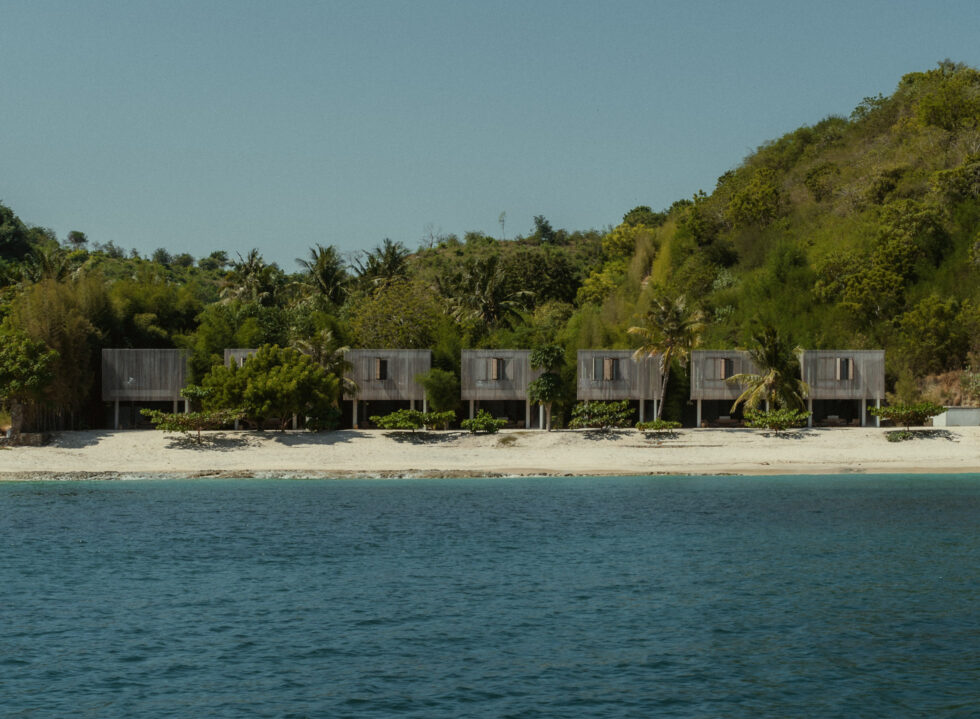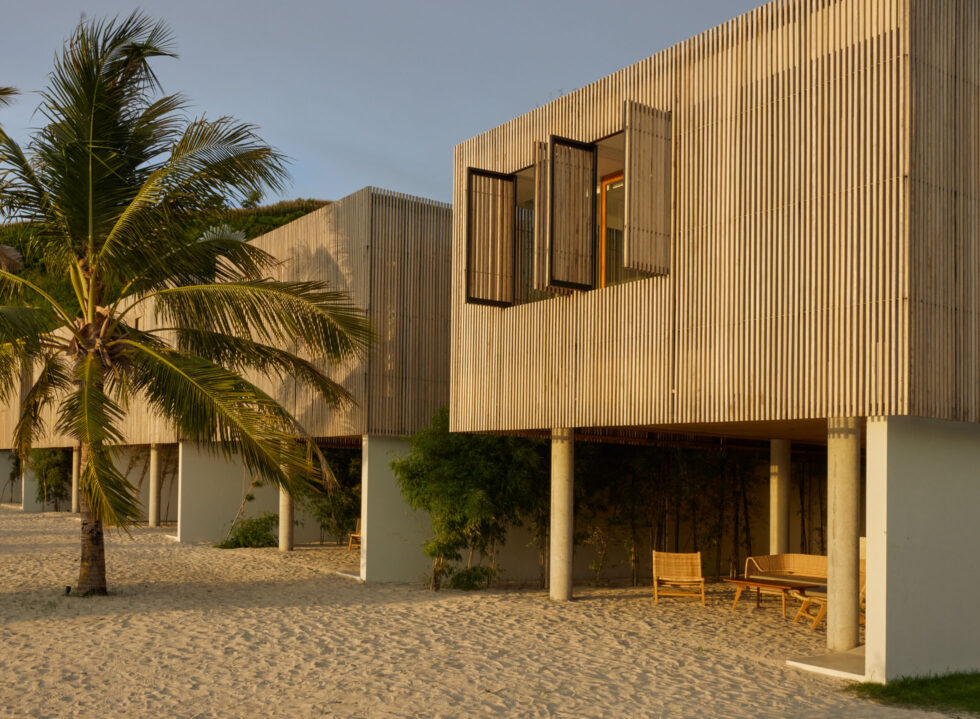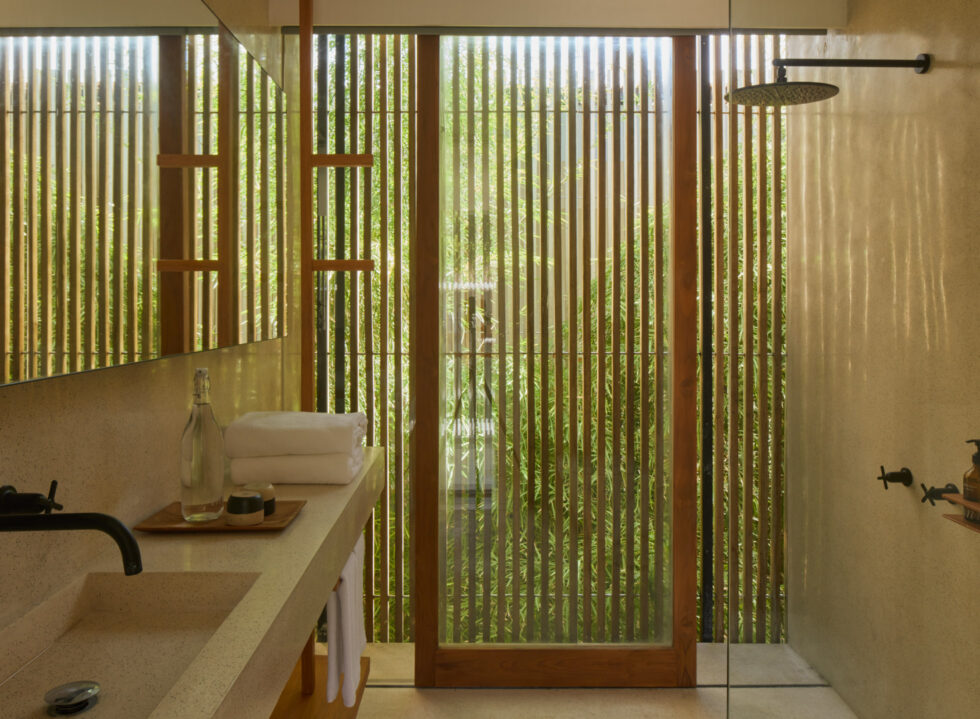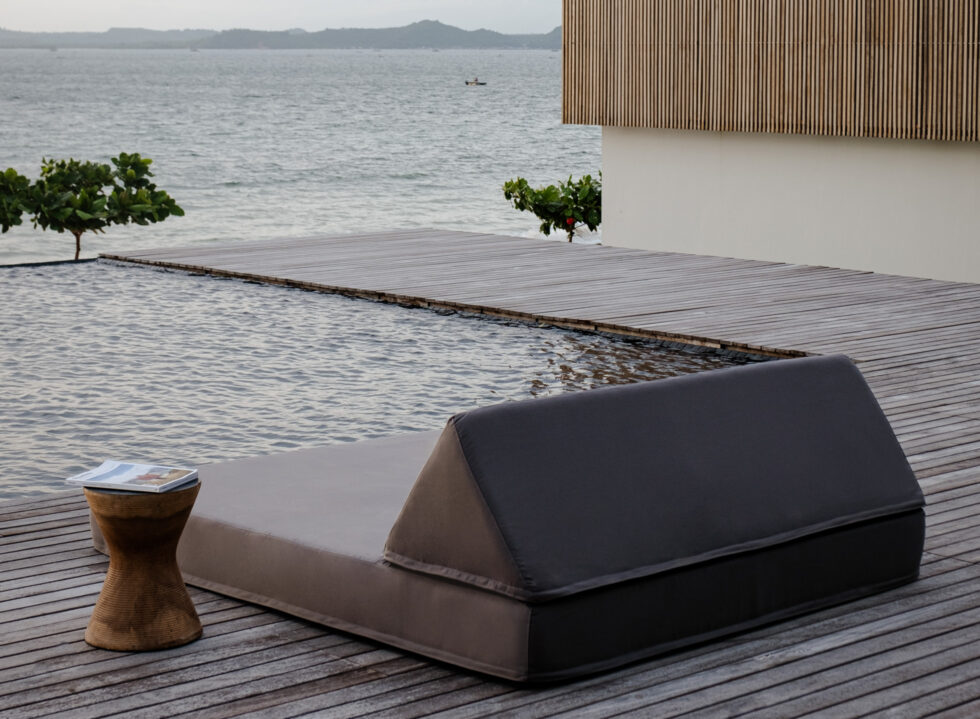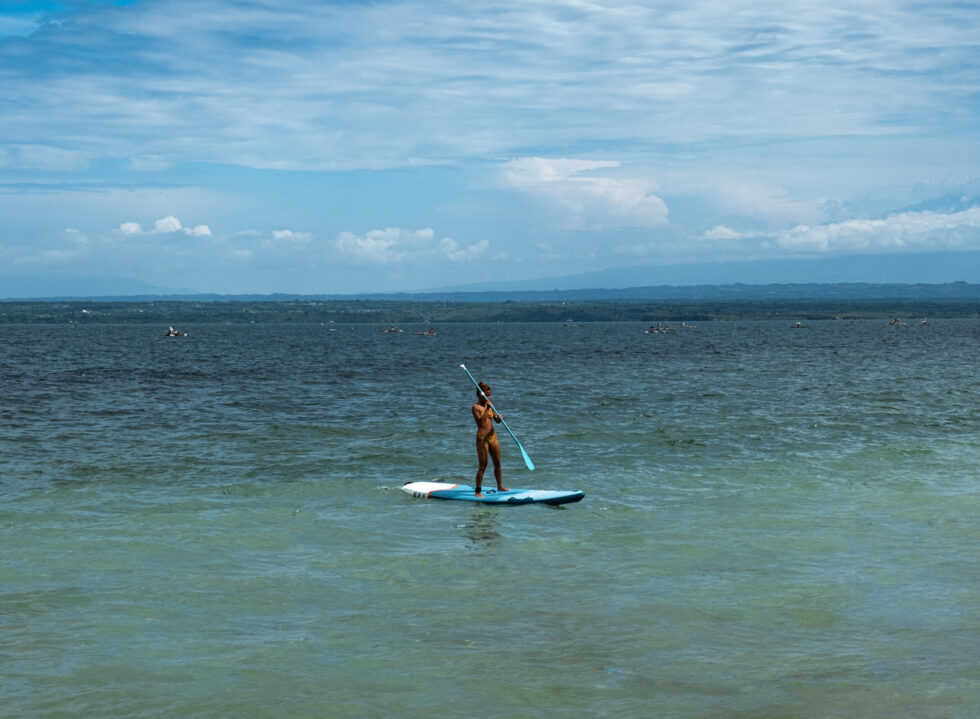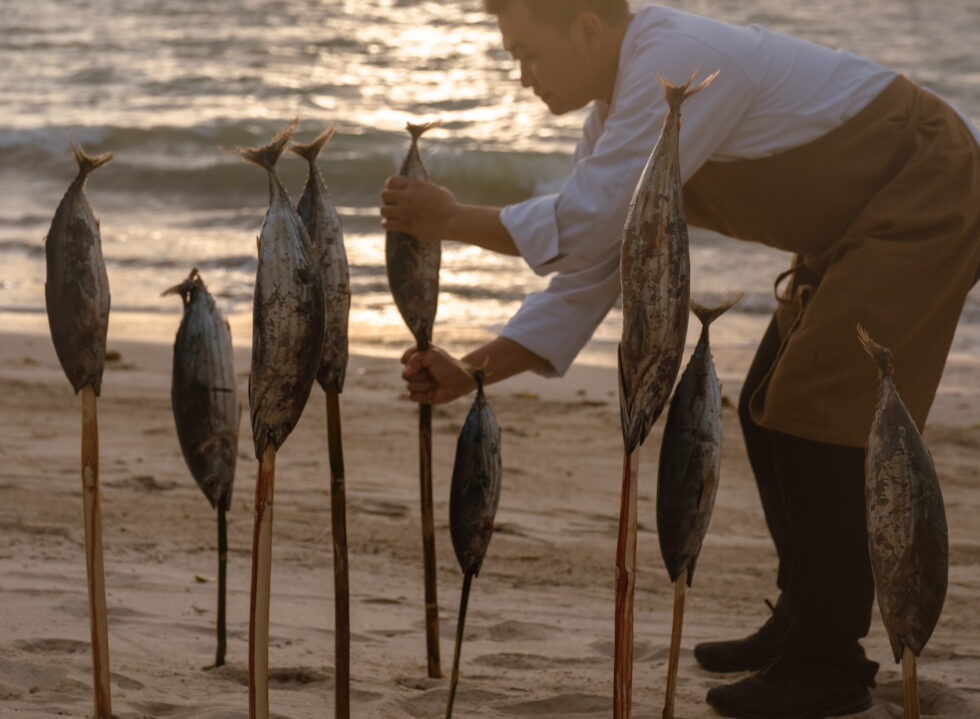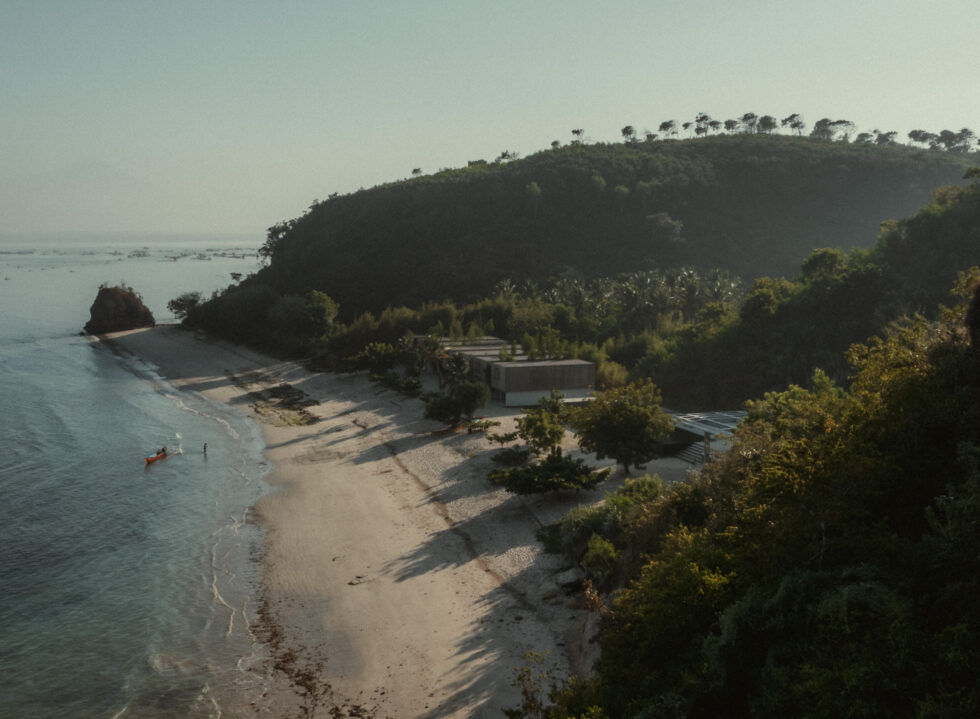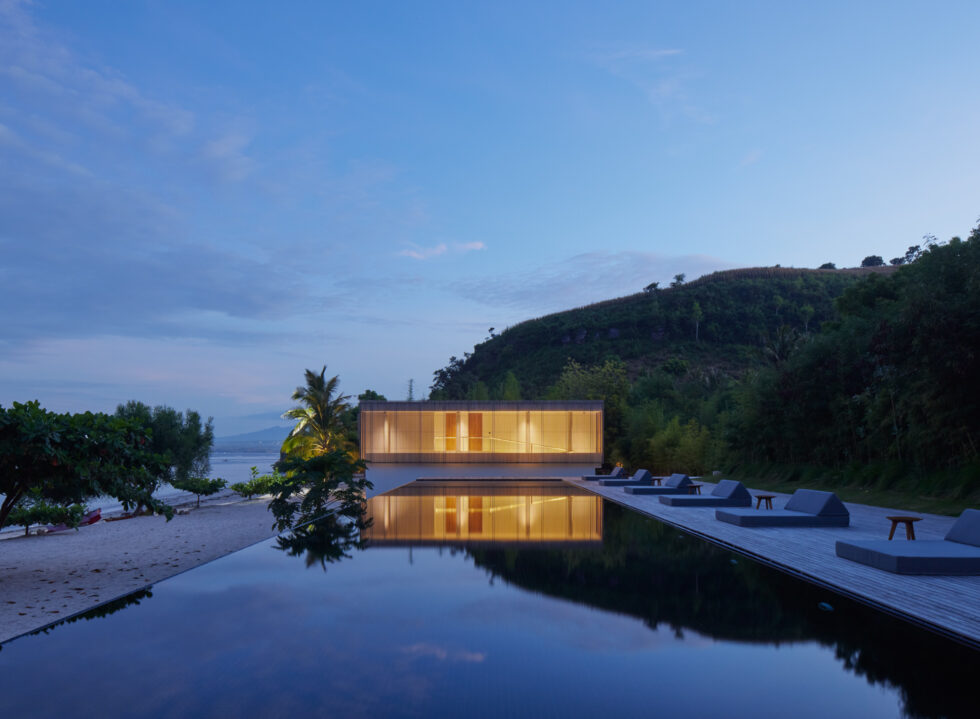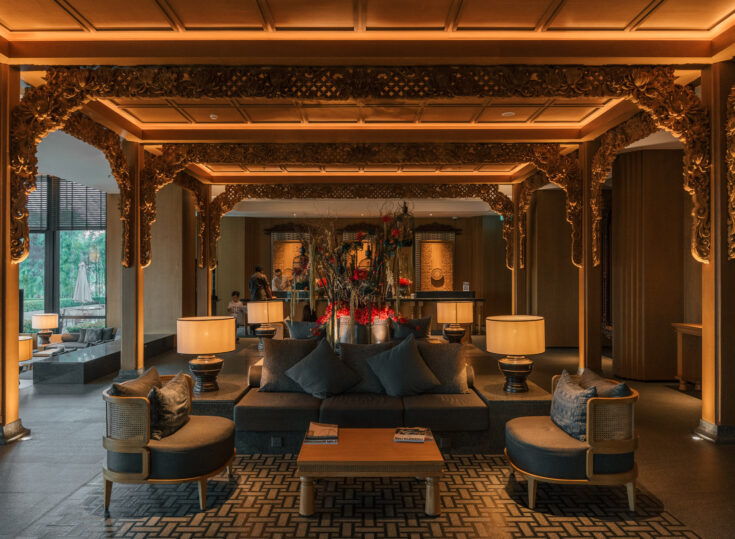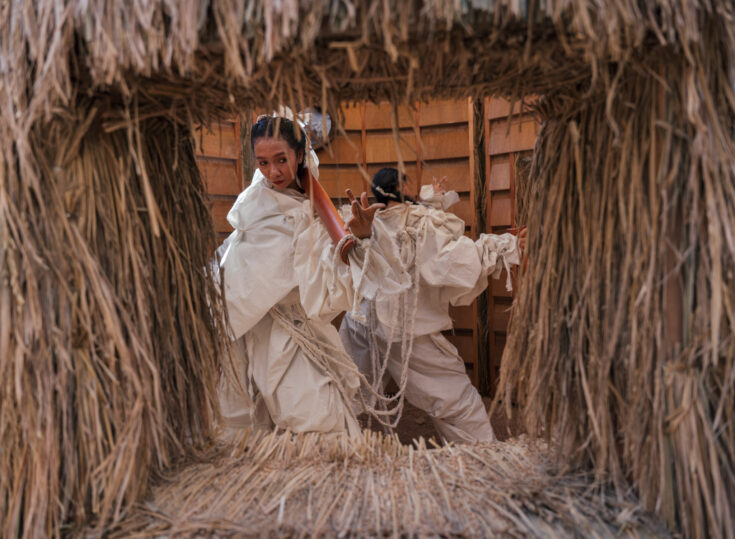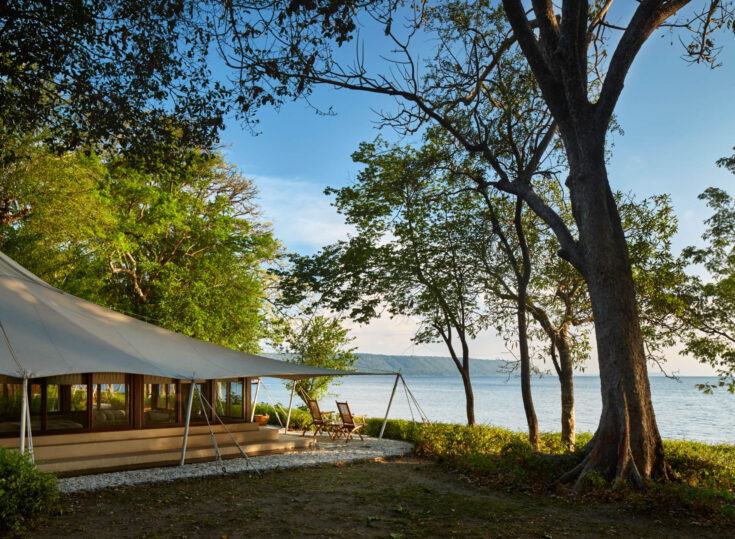When Michal Tyles set out to Ekas Bay a little over 20 years ago, long before Innit Lombok even existed as an idea, he had nothing in mind other than a quiet fishing trip. Until then, the Slovakian hotelier, who has lived in Indonesia since the 1990s, had known of the area only through stories from the Lombok natives he met in Bali, who painted a picture of an idyllic scene of white sand beaches and a strong fishing culture.
He happily discovered that the bay lived up to the tales, but more than that, what he found was a place with a strong sense of community. Locals welcomed Michal and his crew without fuss when they stopped along the shore to grill their catch. And before long, the meal grew communal. Rice, sambal and the land’s staple harvest of corn appeared, shared by villagers who joined them on the sand.
The encounter stayed with him. Years later, he returned to Ekas Bay and established Innit Lombok on a nearby stretch of hidden coastline, which was revealed to him by Amaq Kerama, the village head he met on that fateful feast.
Today, even as developments gather pace on the island with the motorsports racetrack in Mandalika, Ekas Bay remains a world apart from the tourist-oriented areas on Lombok’s western coast. Stretching along the eastern edge of the island’s main southern inlet, where the land seems almost cut off from the rest of Lombok, life at Ekas Bay continues to follow the commands of nature. The land’s all-encompassing expanse of fields shifts with the season, covered with the wide leaves of tobacco in the dry months, and corn stalks when the rains return.
Rather than softening or disguising this rural edge for its guests, Innit chooses to embrace it. The resort’s current cluster of seven beach houses sits snugly beside Kampong Berore, a village of roughly 80 people set just inland. Sometimes, the village’s long-standing habits and traditions can be sighted from the resort; like how on evenings with especially high tides, men from the village would enter the bay and hunt for fish with their spears, moving through the dark water with an ease born of habit.
In this proximity, rural pace has a way of settling in. And with it, one easily sheds the constant need of being digitally stimulated and eases into the pleasures of doing little, or even nothing at all. Lounging by Innit’s obsidian pool under the blaze of the sun feels productive enough. There’s little reason to reach for a screen when the bay lies open ahead, its turquoise waters sloshing against the white sand, demanding to be seen.
On days when the sun feels just a shade too bright, the beach house offers refuge without losing sight of the sea. Designed by notable Indonesian architects Andra Matin, Gregorius Supie Yolodi and Maria Rosantina, who also shaped the resort as a whole, the two-storey villas take their cues from the stilted lumbung houses of Lombok’s Sasak people. Two bedrooms sit upstairs, while the living area below opens straight onto the beach. Even the floor gives little separation from the outdoors, finished in the same white sand as the dunes that fringe the beach outside.
Given Innit’s remote setting, the restaurant Anakampung becomes something of an anchor. Here, the dining experience quietly echoes the sense of community Michal encountered on his first visit to the bay. The space is centred on a long communal table, encouraging guests to eat alongside one another rather than apart. Extending this approach, Anakampung also facilitates a beachside barbecue, where fresh, handpicked lobsters are grilled over an open fire.
One could easily spend an entire stay whiling away the days at the resort. Beyond the resort’s quiet perimeter, however, the sea offers other ways to spend it. A short boat ride north takes guests to Ekas Village, home to a network of lobster farmers. Small shacks rest on bamboo frames above deep blue waters, carrying wide nets of fat lobsters that are watched over zealously through long days and colder nights. While closer to the resort, the bay’s calm surface provides opportunities for guests to partake in a session of paddleboarding.
For those willing to venture even farther, snorkelling near the island’s pink beaches on the opposite side of the headland offers a glimpse of reef life. Schools of small, brightly coloured fish move through the clear shallows, recalling childhood viewings of ‘Finding Nemo’, while farther out, deeper waters may occasionally reveal a rare sight of a whale shark.
Whichever way one chooses to spend their stay, Innit offers a quiet call to loosen familiar habits and settle into the established tempo shaped by Ekas Bay and the community that lives by it. It is felt in the way the resort sits lightly within the landscape, leaving native trees such as the evergreen nimbe intact; and in the way sand drifts into living spaces, making footwear feel unnecessary.
Innit can feel sealed off, deliberately so, yet it never entirely disconnects from the place that sustains it. More than half of its staff come from neighbouring villages, maintaining a daily link to life beyond the resort’s borders. What remains is not a performance of immersion, but a sincere appreciation towards a landscape and the way of life that has long set its own pace.
